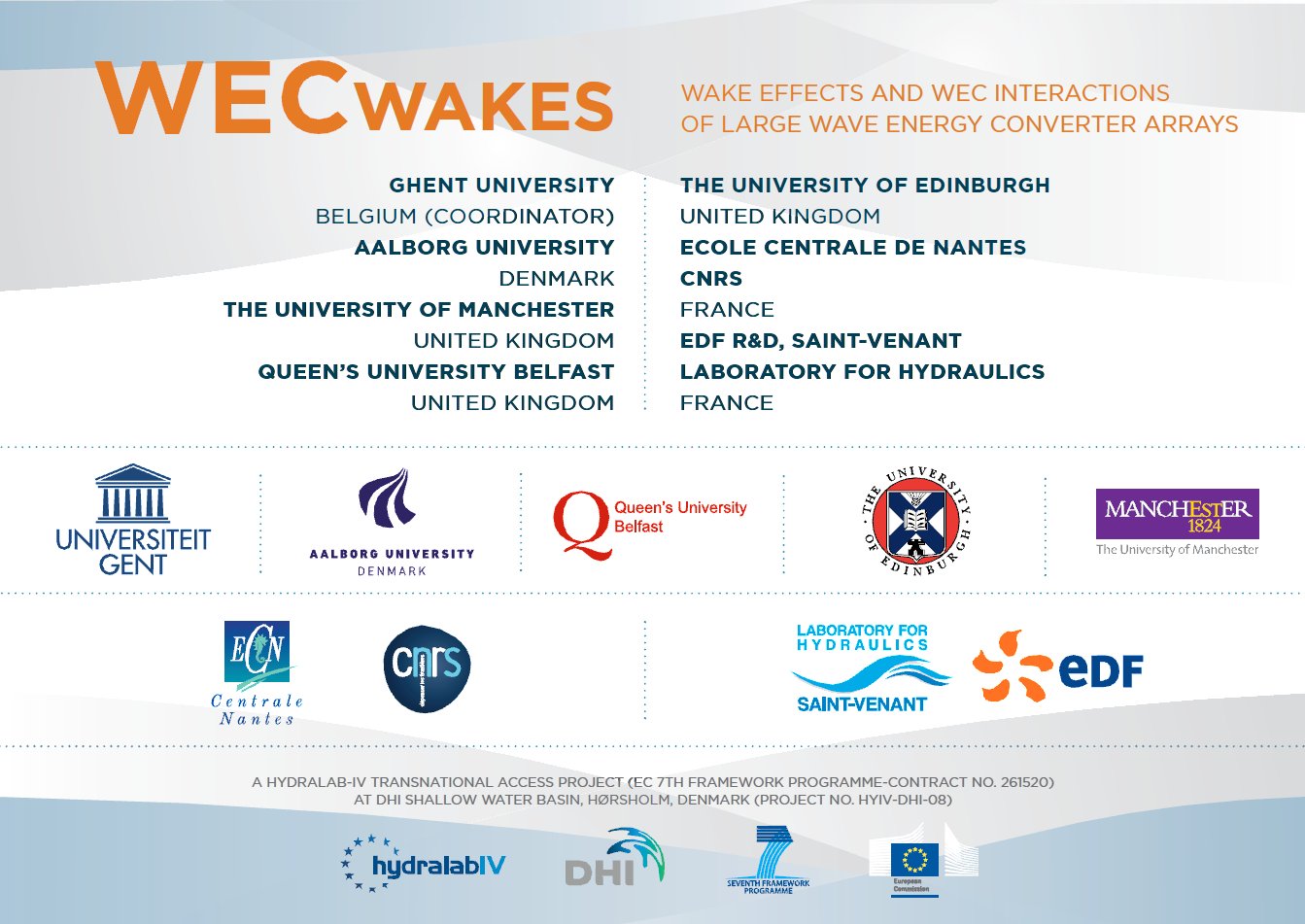WECwakes project with record breaking Wave Energy Converter array

This project, 'Large scale experiments on wave energy converter farms to study the near-field effects between the converters and the far-field effects on other users in the coastal area' is coordinated by professor Peter Troch in a consortium of 7 international partners. It is testing a record breaking array of wave energy converters: the largest array worldwide (25 individual Wave Energy Converters or WECs in an array set-up) is under testing in the Danish Hydraulic Institute wave tank.
Wave Energy Converters (WECs) extract energy from ocean waves and have the potential to produce a significant contribution of electricity from renewable sources. Commercial exploitation of wave energy will require installation of large numbers of WECs arranged in an array or a farm, using a particular geometrical layout.
The operational behaviour (i.e. the energy production) of a single WEC in a WEC array will be affected by the behaviour of the neighbouring WECs in the array. As a result, the production of the array may be smaller or larger than the superposition of the individual WECs. Therefore, the deployment of wave energy for practical energy production requires an accurate understanding of these WEC interactions in a wave farm. With this understanding, the optimal geometrical farm layout can be determined, and ultimately the cost of energy will be reduced significantly.
Several numerical studies on both small and large WEC arrays have already been performed, and have provided some initial indications of the WEC interactions. However, there has been very limited validation of these numerical models using physical scale models of WEC arrays. This project has been launched with the objective to perform large scale experiments in the Shallow Water Wave Basin in Denmark, on large arrays of point absorbers (up to 25 WECs) for a range of layout configurations and wave conditions.
The physical model of a large array of 25 individual WECs is tested at the wave tank, which is 50 m wide and 30 m long, with 22 m of wave paddles along one side of the wave tank. Water depth is 0.7 m, and a range of wave conditions (using regular, irregular long-crested and short-crested waves) is used. This experimental set-up of 25 individual WEC units in array layout placed in this large wave tank is a record breaking achievement: it is worldwide the largest set-up of its kind studying the important effects of WEC interactions and WEC wake effects.
The obtained results from these experimental tests will be very useful to validate and extend the recently developed numerical models, as well as to optimize the geometrical layout of WEC arrays for real applications.
